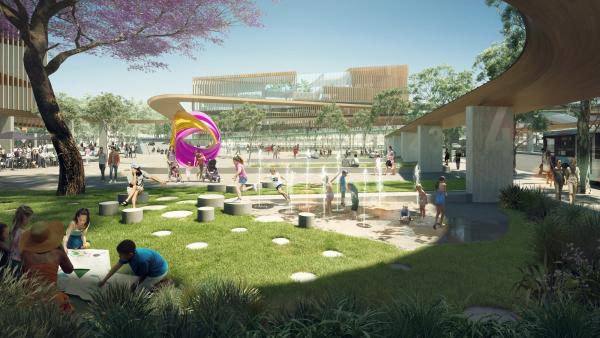Improving urban environments using new SMART data and technology driven approaches.
Project summary
Like many inner city suburbs around the world, Granville in Sydney faces complex challenges including crime, illicit drugs, and lack of economic opportunities to cultivate and retain local talent.
Many of these social problems are inter-connected to environmental issues including lack of communal green space, poor recognition and preservation of natural assets, congested roads, noise pollution and urban heating.
This project was designed to tackle these issues using a new technology and data-driven approach.
Using SMART technology the project was designed to enhance the liveability, sustainability, and productivity of the suburb of Granville. This required the development of a scalable and replicable Smart City strategy that could be applied by the local government – Cumberland City Council.
The Project used the transformation of the Granville Station precinct as a pilot because this area is the commercial, cultural and transport hub of the area.
Using SMART technology the project was designed to enhance the liveability, sustainability, and productivity of the suburb of Granville
The UTS team used a scalable Urban Living Lab model underpinned by a quadruple helix collaboration initiative with the involvement of government, industry, academia, and local citizens.
Spatial Data Science techniques along with real-time data and early citizen involvement were used to develop a model for urban transformation.
The proposed model included:
- More mixed-use facilities
- Enhanced active mobility, increasing pedestrianisation by 40%
- Increased tree cover by 30%
- More economic opportunities to attract a new, younger demographic
- Improved social cohesion and safety with child-friendly play zones
- Reduced congestion by redesigning mobility hubs
- Reduced carbon footprint through the use of sustainable materials.
The project used SMART technology, on-ground community participation, intelligence-driven re-design, and socio-economic projections to develop a new approach for Cumberland City Council. The model developed could be used in urban communities elsewhere.
For more information, visit the Granville Smart Precinct project website.
Project timeframe
2019 – 2021
SDG targets addressed by this project
Reduced inequalities:
10.2 - By 2030, empower and promote the social, economic and political inclusion of all, irrespective of age, sex, disability, race, ethnicity, origin, religion or economic or other status.
Sustainable cities and communities:
11.3 - By 2030, enhance inclusive and sustainable urbanization and capacity for participatory, integrated and sustainable human settlement planning and management in all countries.
11.7 - By 2030, provide universal access to safe, inclusive and accessible, green and public spaces, in particular for women and children, older persons and persons with disabilities.
-
Associate Professor, School of Architecture
-
Key collaborators
Cumberland City Council
- Daniel Anderson, Executive Manager, Environment and Precincts
- Nyambura Mwaniki, Coordinator, Infrastructure & Place Strategy and Planning





